Got something big and nasty that needs shooting? Hand it to Ed, he’ll shoot anything. Yep, that’s me, the crash-test dummy of shooting. At least that’s the way some folks view me. A case in point is my friend who hunts with a lightweight .300 Winchester Magnum bolt-action rifle. He fires one round every year to harvest his deer, and in between hands it off to me when he wants it zeroed – because we all know shooting a .300 Win Mag off a bench rest ranges from being unpleasant to hurting like hell. For better or worse I’ve had a number of “friends” like this over the years.
When Ruger told me they had a new version of their wildly popular Precision Rifle in .300 Win Mag I asked them to send me one for testing with a certain amount of trepidation. After all, a proper test would involve many rounds fired off the bench; this wasn’t going to be fun, thought I. As it turned out, with a loaded, all up weight of over 16 pounds and a massive muzzle break shooting the big cannon is a piece of cake. Yes, even off the bench, after many rounds fired, it’s a pussycat. Easy for me to say as most of the shooting was done by a friend, but honest, it ain’t bad. What to compare it to? I’d say it’s about like shooting the much smaller Precision Rifle in .308 Winchester.
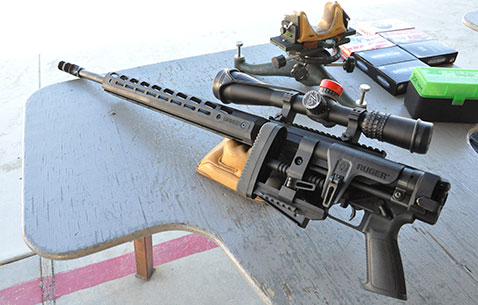 Along with the subject of this report, Ruger now has the same rifle chambered in .338 Lapua so it makes sense the new rifle is bigger and heavier than the previous versions chambered in calibers like .308 Winchester and 6.5 Creedmoor. The cold hammer-forged barrel with 5R rifling is 26 inches long and measures .875” at the muzzle where it is threaded 5/8”-24. The rifle comes with a massive muzzle brake and tunable compensator that can be removed should you wish to install other brakes or a suppressor. The Ruger Precision MSR stock is fully adjustable for length of pull and comb height, just like the stocks on the previous RPRs. As with previous versions the stock folds to the side for removal of the large bolt, and that’s a good thing because it’s about the only way you’re going to get this big rifle in a standard rifle case.
Along with the subject of this report, Ruger now has the same rifle chambered in .338 Lapua so it makes sense the new rifle is bigger and heavier than the previous versions chambered in calibers like .308 Winchester and 6.5 Creedmoor. The cold hammer-forged barrel with 5R rifling is 26 inches long and measures .875” at the muzzle where it is threaded 5/8”-24. The rifle comes with a massive muzzle brake and tunable compensator that can be removed should you wish to install other brakes or a suppressor. The Ruger Precision MSR stock is fully adjustable for length of pull and comb height, just like the stocks on the previous RPRs. As with previous versions the stock folds to the side for removal of the large bolt, and that’s a good thing because it’s about the only way you’re going to get this big rifle in a standard rifle case.
The trigger is what I have come to expect on Ruger’s Precision Rifles – it’s terrific. Ruger’s Marksman Adjustable trigger is used in the RPRs as well as rifles in the American Rifle series and they are so good I’ve never bothered to adjust one. They are crisp and light, breaking at around 3 pounds out of the box. They can be adjusted down to about 2.5 pounds but I’ve found, with use, they tend to settle in at about 2.5 pounds on their own. Further features include two, five round AI pattern magazines, a 30 MOA Picatinny rail to assist in long range shooting, a free-float M-LOK forend and an ambidextrous manual safety and pistol grip out of the AR parts bin.
 Shooting Results
Shooting Results
Have you ever fired groups with a rifle at 100 yards only to discover you can shoot “better” groups at 200 or 300 yards? I have; quite frequently I’ll end up with better than expected results, especially at 300 yards. What do I mean by better than expected? Well, let’s say I was able to shoot a 1” group at 100 yards. I would then expect the rifle to be capable of 2” groups at 200 yards and 3” groups at 300 yards. Much to my amazement I frequently shoot 1.5” groups at 300 yards. How to explain this? Well, in most cases the bullet has not stabilized at 100 yards. Especially, I suspect, with longer bullets with high ballistic coefficients designed for long-range accuracy, the bullet needs time to settle down and stabilize after being hurled from the barrel in a blast of very high-pressure super-heated gas. Using the example of Hornady’s Match ELD-X loading in the .300 Win Mag, it leaves the RPR barrel at 2986 feet per second and takes about 1/10th of a second to strike the target at 100 yards. That’s not much time to stabilize, and even though it only takes about 2/10ths of a second more to get to 300 yards that additional time and distance allow the bullet to stabilize.
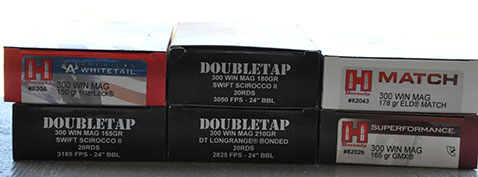 The standard for testing rifle accuracy is 3 or 5 shot groups fired from a rest at a 100-yard target. We normally measure the extreme spread of the group – that being the center to center distance between two bullet holes on the edge of the group that are furthest apart. Because the .300 Win Mag in a precision rifle is a long-range proposition I decided to shoot groups at 200 yards. My shooting partner for this test is a scientist who has made an in-depth study of these matters and he has concluded you get a much better sense for how a rifle and load are shooting if you shoot 8 shot groups and measure the radial average from center as opposed to extreme spread.
The standard for testing rifle accuracy is 3 or 5 shot groups fired from a rest at a 100-yard target. We normally measure the extreme spread of the group – that being the center to center distance between two bullet holes on the edge of the group that are furthest apart. Because the .300 Win Mag in a precision rifle is a long-range proposition I decided to shoot groups at 200 yards. My shooting partner for this test is a scientist who has made an in-depth study of these matters and he has concluded you get a much better sense for how a rifle and load are shooting if you shoot 8 shot groups and measure the radial average from center as opposed to extreme spread.
Eight shot groups? Yes, bear with me and I’ll tell you how this works. While we tested six loads at 200 yards let me give you the data for three of them.
Load #1: Handload consisting of Nosler virgin brass, CCI benchrest primers, 79.0 grains of Varget, Sierra 175 grain MoS Matchking bullet at 2926 feet per second average velocity. Extreme spread, 1.79”.
Load #2: Hornady 178 grain ELD Match factory load at 2986 feet per second average velocity. Extreme spread 2.88”.
Load #3: DoubleTap DT Longrange 210 grain Bonded at 2864 feet per second average velocity. Extreme spread 4.33”
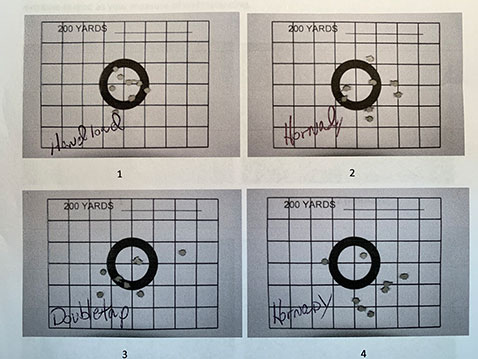 At first glance you might conclude the Doubletap group is twice as “bad” as the handload and the Hornady group is in between the two. But when you examine the average radial spread of the bullets a different picture emerges. The average distance of each hit from the center is 0.75” for the handload, 1.2” for the Hornady load and 1.12” for the “bad” Doubletap load. As a control, a second 8 shot group was fired with the Hornady load and while its extreme spread was 3.75” the radial average came in at 1.31”, a mere .11” difference from the previous 8 shot group. How’s that for consistency?
At first glance you might conclude the Doubletap group is twice as “bad” as the handload and the Hornady group is in between the two. But when you examine the average radial spread of the bullets a different picture emerges. The average distance of each hit from the center is 0.75” for the handload, 1.2” for the Hornady load and 1.12” for the “bad” Doubletap load. As a control, a second 8 shot group was fired with the Hornady load and while its extreme spread was 3.75” the radial average came in at 1.31”, a mere .11” difference from the previous 8 shot group. How’s that for consistency?
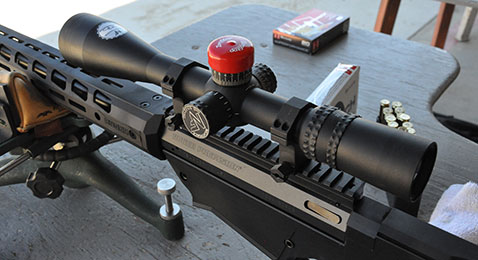 What’s all this mean? It means the Ruger Precision Rifle in .300 Win Mag, topped with a Nightforce 5.5-22 telescope and fired off a benchrest by a very good shooter with excellent ammunition is a very good rifle.
What’s all this mean? It means the Ruger Precision Rifle in .300 Win Mag, topped with a Nightforce 5.5-22 telescope and fired off a benchrest by a very good shooter with excellent ammunition is a very good rifle.
The RPR .300 Winchester Magnum has a suggested retail price of $2099 and will likely be available for something less than that. Even at full retail, this rifle is a bargain, as it will shoot with rifles costing more than twice the price and is “good to go” right out of the box. If extreme long range shooting is your thing these new Ruger rifles in .300 Win Mag and 338 Lapua will get the job done.

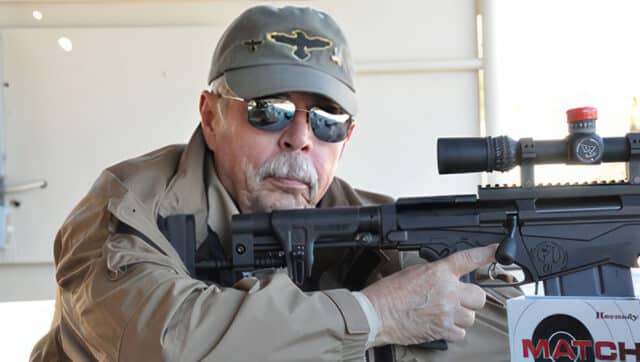
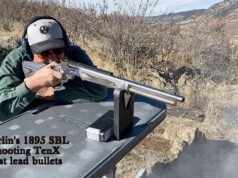
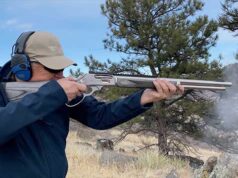
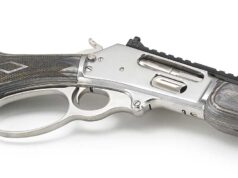
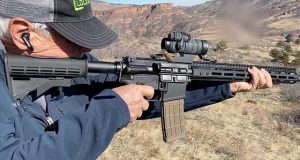
Ed, thanks for the great info on the RPR .300 Win Mag. I have been looking at several rifles in this caliber and you made up my mind for me. You wrote that the rifle is “good to go” right out of the box. Does that mean a barrel break in would not be necessary? I have read several expert’s / author’s description of how a new barrel should be broken in. I have followed their instructions on a new .308 a few years ago. If a break in is necessary, do you have a method that you recommend? Thanks millions.
first 5 rounds clean between each shot. 2nd 10 rounds clean between every other shot. next 50 rounds clean between every ten shots.
Hello Ed,
Can i chamber a Hornady .300 win mag to my RPR .308? I bought a bx of .308 rounds, the lady at the counter hand it over, later i found out when i got home that it was .300 win mag?
This is a serious inquiry.